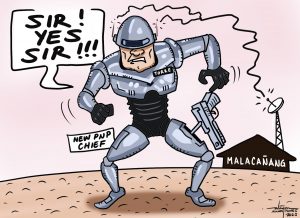If we are to base the Philippine government’s seriousness in investing in culture and arts on paper — from the Philippine Constitution to various laws and policy pronouncements — we would think that it’s a priority. But in practice? Not really.
One such paper, the Philippine Development Plan, has an entire section on “Promoting Philippine Culture and Values.” It declares that the development plan “pays close attention to the empowering nature of culture” and that “cultural awareness is a requirement for social inclusion and equity.”
However, the same paper also admits that “despite the legal mandates, agencies do not have adequate resources to implement programs for cultural development.”
The plan identified the following outcomes: (1) Our diverse culture valued; (2) Value of creative excellence advanced; (3) Values for the common good inculcated; and (4) Culture-sensitive governance and development strengthened.
Well, those were the planned outcomes for the 2017-2022 period. I have yet to see a report if those were achieved. But as far as Mindanao artists and cultural workers are concerned, culture and arts remain to be in the periphery in the hearts and minds of our government leaders.
During the launch of the Museums and Galleries Month 2024 last October 1 at the SM Lanang Premier here in Davao City, Kublai Millan likened the plight of struggling artists to the experience of Mindanao.
“Like the artist, Mindanao has been relegated to the edge — and as the saying goes, the edge does not matter,” Kublai lamented.
“This frontier of the nation-state is far from the Philippine center, and for decades has suffered from national neglect and marginalization. The island is trapped in a violent cycle of long-standing conflicts, poor infrastructure development, and limited investments,” he added.
But even as the challenges for Mindanao artists are greater than in any part of the country, they still create so much.
As Kublai said: “We have been relegated to the edges, and so we have the edge.”
“Producing art amidst conflict and amidst scarcity,” Mindanao artists have had to be resilient, resourceful, and imaginative. Mindanao gets so little yet gives so much.
The National Commission for Culture and the Arts (NCCA), in an effort to address this historical neglect, decided to launch the Museums and Galleries Month 2024 in Mindanao to coincide with Mindanao Art 2024 here in Davao City.
Its theme, “Honoring Tradition, Fostering Innovation,” highlights the importance of valuing and respecting cultural heritage while simultaneously encouraging new ideas and creative progress.
Traditions provide a sense of belonging and continuity, connecting individuals and communities to their past. Traditional knowledge and practices can serve as a foundation for new developments, offering lessons and insights that inform modern approaches.
Innovation often requires adapting traditional methods to contemporary contexts, allowing for growth while still respecting our roots. By embracing innovation, communities can address current challenges and improve their quality of life, ensuring that cultural practices remain relevant. Innovation also involves creating an environment where experimentation is welcomed.
So this year’s theme urges us to purse balanced progress and sustainable development. A balance between maintaining cultural identity and pursuing new directions. A dialogue between the old and the new, ensuring that innovations are grounded in a rich context and sustainable practices respect the environment and community values.
Although the theme came from NCCA, a government agency under the Office of the President, I doubt if this sentiment is shared by our political leaders who make the decisions on where to invest our precious public funds.
Our government often prioritizes spending on “essential services” like healthcare, education, and infrastructure, which can leave less funding available for the arts. Especially if we factor in the corruption that goes to almost every project and expenditure.
Most of our politicians also do not see art as essential. They have not yet figured out how to put their names and faces on cultural projects in aid of reelection. And political cycles often emphasize immediate, measurable outcomes and arts initiatives are usually seen as long-term investments that do not yield quick results.
And there is the issue of competing interests. Other sectors, such as technology or security, might lobby more effectively for funding support, overshadowing the arts.
“We obsess about economic progress, about technological and military strength, about health and security. But we pay no attention to developing our culture, the central pillar of nation building,” Kublai noted.
“As a consequence, we struggle to define our identity. We are perpetually plagued with chronic mediocrity and a lack of imagination,” he added. “The Filipino has filled his stomach and his bank account, but his soul remains malnourished.”
Politicians may not see support for the arts to be as effective as their traditional “ayuda” to get them reelected, but art is as important to us as those food packs they distribute decorated with their names and faces.
Art brings people together, creating shared experiences and fostering social bonds, which are essential for human connection. Exposure to art encourages creativity and critical thinking, skills that are valuable for survival and for solving our social problems.
Art is a vital aspect of a fulfilling life, contributing to emotional health, cultural identity, and community cohesion.
This lack of public investment in promoting culture and arts in the Philippines has resulted in mediocrity. Exhibit A is the poor quality of politicians filing their certificates of candidacy for the 2025 elections. So it should not surprise us if the Filipino people are bored and uninspired.
So if we are serious about fostering innovation, we must take culture and arts seriously.

